 | Charles Davies - Algebra - 1860 - 332 pages
...COEFFICIENTS. The coefficient of the first term is 1 / the coefficient of any succeeding term is found by multiplying the coefficient of the preceding term by the exponent of tJie leading letter in that term, and dividing the product by the number of terms preceding the required... | |
 | Benjamin Greenleaf - 1863 - 338 pages
...term is the same as the exponent of the power ; and, in general, the coefficient of any term is found by multiplying the coefficient of the preceding term by the exponent of the leading letter of the same term, and dividing the product by the number which marks its place. NOTE 1. When... | |
 | Horatio Nelson Robinson - Algebra - 1866 - 328 pages
...coefficient of the leading quantity in the root. UNIVERSALLY; — The coefficient of any term may be obtained by multiplying the coefficient of the preceding term...the exponent of the leading quantity in that term, or by (he number of the term from the last, and, by the coefficient of the following quantity in the... | |
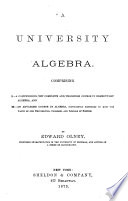 | Edward Olney - Algebra - 1873 - 354 pages
...unity ; of the second, the exponent of the required power ; and that of any other term may be found by multiplying the coefficient of the preceding term by the exponent of the first letter in that term, and dividing the product by the exponent of the second letter + 1. 100,... | |
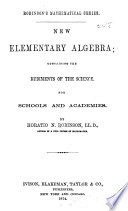 | Horatio Nelson Robinson - Algebra - 1874 - 340 pages
...coefficient of the leading quantity in the root. UNIVERSALLY; — The coefficient of any term may be obtained by multiplying the coefficient of the preceding term...the exponent of the leading quantity in that term, or by the number of the term from the last, and by the coefficient of the following quantity in the... | |
 | Horatio Nelson Robinson - Algebra - 1875 - 340 pages
...the leading quantity in the root. UNIVERSALLY : — The coefficient of any term may bе obtained Ъу multiplying the coefficient of the preceding term...the exponent of the leading quantity in that term, or by the number of the term from the last, and by the coefficient of the following qnantity in the... | |
 | William Guy Peck - Algebra - 1875 - 348 pages
...COEFFICIENTS. — The coefficient of the first term is 1 ; the coefficient of any succeeding term is found by multiplying the coefficient of the preceding term by the exponent of the leading letter in that term, and dividing the product by the number of terms preceding the required term. Let... | |
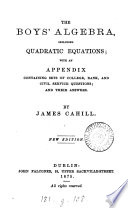 | James Cahill (of Dublin.) - Algebra - 1875 - 230 pages
...term after the first is found by multiplying the coefficient of the preceding term by the index of x in that term, and dividing the product by the number of that term, that is, the number denoting its place in the expansion. VI. The coefficients in the second half of... | |
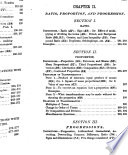 | Edward Olney - Algebra - 1877 - 466 pages
...unity ; of the second, the exponent of the required power; and tliat of any other term may be found by multiplying the coefficient of the preceding term by the exponent of the first letter in that term, and dividing the product by the exponent of the second letter + 1. SameU«<»*... | |
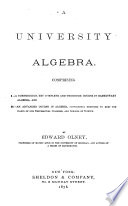 | Edward Olney - 1878 - 360 pages
...unity ; of the second, the exponent of the required power ; and that of any other term may be found by multiplying the coefficient of the preceding term, by the exponent of the first letter in that term, and dividing the product by the exponent of the second letter + 1. 190.... | |
| |